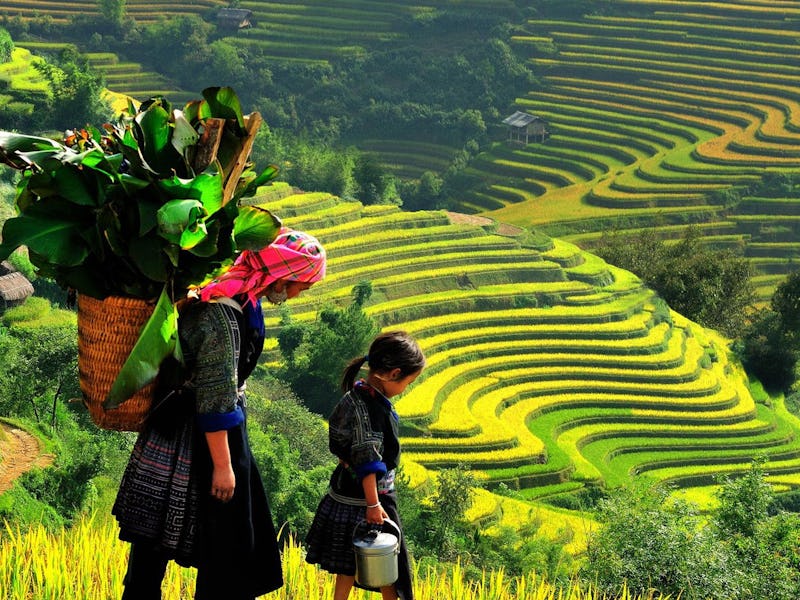UN Report Highlights the People Who Are Crucial to the "Survival of Humanity"
"These people are disproportionately impacted by human-caused pressures on nature."

A massive, United Nations-backed report on biodiversity confirmed that humanity is “sleep-walking” toward a mass extinction of plants and animals. According to the analysis, released on Monday, 1 million species are threatened with extinction. Human actions, which have significantly damaged land and marine environments, are largely to blame, with one exception. Wildlife managed by indigenous peoples isn’t doing as badly, and the report urges policymakers to listen to their expertise.
The comprehensive report from the Intergovernmental Science-Policy Platform on Biodiversity and Ecosystem Services is the first of its scale to incorporate the knowledge of indigenous communities, a wealth of understanding that highlights three main points:
- On average, human-driven biodiversity decline happens less often in regions held by indigenous peoples and local communities — so there’s an opportunity there to learn how to better regulate resources outside of those areas.
- In order to protect biodiversity as a whole, policymakers need to know what’s changes indigenous communities are seeing. Historically, these communities and their expertise have been ignored.
- While indigenous peoples are the best stewards of lands, they are disproportionately affected by the negative effects of global changes in climate, biodiversity, and ecosystem functions caused by higher-income peoples.
Zsolt Molnar, Ph.D., is one of the lead authors of the report and an ethnoecologist at the Hungarian Academy of Sciences. He tells Inverse that a “major novelty” of this report is that it uses knowledge from local people who have been living in and conserving ecosystems for many generations.
This knowledge, he emphasizes, was incorporated because it’s “crucial for the survival of humanity as a whole, and because these people are disproportionately impacted by human-caused pressures on nature.”
The report differs from previous, large assessments on biodiversity because experts on indigenous and local knowledge developed the guiding questions that made up the backbone of the report itself. Molnar says these questions helped the authors actually focus on issues relevant to indigenous peoples. In addition to reviewing thousands of scientific studies on biodiversity, the authors also conducted a series of dialogue workshops with “local knowledge holders.”
“Indigenous and local knowledge is a huge ‘knowledge bank’ of humanity, comparable to relevant science,” Molnar says. “However, this knowledge bank is being lost at higher rates than biodiversity itself.”
The report also compiled, for the first time, 500 separate local indicators of nature developed and observed by these communities. Seventy-two percent of these indicators revealed that the components of nature that matter to these communities are declining.
Local fisherman, like those in Myanmar, are examples of sustainable practitioners considered in the IPBES report.
This is despite the fact that nature is declining less rapidly in these very regions. Three-quarters of land-based environment and about 66 percent of the marine environment has been significantly and negatively changed by human actions. These trends are less severe — and sometimes completely avoided — in the areas managed by indigenous peoples, but that doesn’t mean their communities aren’t under pressure.
The IPBES report’s findings make it clear that we will miss the 2020 deadline for hitting the 20 Aichi Biodiversity Targets — measurable targets linked to biodiversity health developed by the International Union for Conservation of Nature. Current negative trends are undermining progress for 80 percent of the targets linked to poverty, hunger, health, climate, oceans, and land. Transformative change — the kind that changes the foundation of societies — is the only thing that can stop these trends from continuing forward.
On the other hand, the report argues that indigenous peoples are contributing positively to each of these targets through local activities and traditional knowledge — and that these steps need to be recognized, supported, and replicated for the good of all mankind.
“We argue that traditional indigenous and local land-use practices can help us change our behavior and move toward more sustainable ways of using our natural heritage, natural resources, and biodiversity,” Molnar says.
The goal is that when the UN Convention of Biodiversity kicks off October 2020, this report can set the agenda. Whether or not policy makers will listen and act, however, remains to be seen.